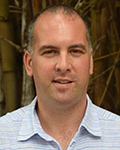2009, 2018
Jonathan E. Pettit
- Assistant Professor
- University of Hawaii at Manoa

Abstract
This project involves archival research of excavated Daoist monuments in Shaanxi, China and working with Dr. Bai Bin at the Department of Archaeology at Sichuan University. This study treats the material remains of these Daoist communities as a form of "promotional literature" in which adherents relate strategies of salvation in a public discourse. Whereas previous scholars have interpreted these monuments in their relation to contemporary scriptural developments, this project stresses these artifacts are best understood when compared to other epigraphic sources. Viewed in the context of other forms of public discourse, these excavated materials reveal how notions of salvation in medieval Daoism were presented to audiences within and outside the community. Whereas these material remains are often marginalized in histories of medieval Daoism, this project argues that they reveal an intersection of popular religion and Daoist practice rarely studied.
Abstract
Our reading workshop brings together an international group of specialists in Chinese medicine and religion to read the Taiqing jinye shendan jing, a text that stands at the crux of critical issues in the histories of religion, science and medicine in China. Beyond simply translating this text, our team will investigate how drugs featured in its pages traveled and were differently construed across diverse communities in medieval China. This project makes new technological strides, by developing digital tools to track the situated nature of drug lore—within communities, within textual genealogies and within time and space. We will arrive at a more refined understanding of the ways in which substances functioned in their reception, use and circulation in medieval China.

